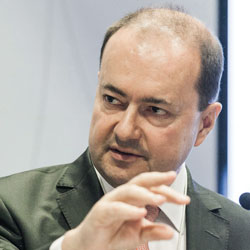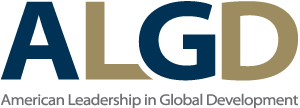40 years ago, public sector development assistance accounted for roughly 70% of all resources flowing to developing nations. Today, over 80% of the resources flowing into these regions come from private sources (corporations, foundations, NGOs and remittances). As the U.S. government’s foreign assistance budget experiences further downward pressure, the goal of achieving sustainable development in partner countries will increasingly depend upon the leveraging of private sector investment.
Key Facts
 “The volume of external flows to [sub-Saharan Africa] increased from $20 billion in 1990 to above $120 billion in 2012. Most of this increase in external flows to sub-Saharan Africa can be attributed to the increase in private capital flows and the growth of remittances, especially since 2005.”
“The volume of external flows to [sub-Saharan Africa] increased from $20 billion in 1990 to above $120 billion in 2012. Most of this increase in external flows to sub-Saharan Africa can be attributed to the increase in private capital flows and the growth of remittances, especially since 2005.”

“Developing countries have also become important sources of investments: while only 7 per cent of global FDI originated from developing countries at the end of the 1980s, developing countries accounted for 34 percent in 2012.”
Source: World Trade Organization World Trade Report, 2014
 “Developing economies are increasingly recipients and sources of FDI. They absorbed more than half of global FDI inflows in 2012, versus less than 20 percent in 2000.”
“Developing economies are increasingly recipients and sources of FDI. They absorbed more than half of global FDI inflows in 2012, versus less than 20 percent in 2000.”
Source: World Trade Organization World Trade Report, 2014
 “In 2000, U.S. private flows to developing countries were roughly equal to official development assistance (ODA). Today, U.S. private flows ($100 billion-150 billion per year) are three to five times larger, and U.S. private philanthropy exceeds U.S. ODA ($30 billion) as well.”
“In 2000, U.S. private flows to developing countries were roughly equal to official development assistance (ODA). Today, U.S. private flows ($100 billion-150 billion per year) are three to five times larger, and U.S. private philanthropy exceeds U.S. ODA ($30 billion) as well.”
Source: Brookings: Strengthening U.S. Government Development Finance Institutions, December 2013
Read More “Shifting Capital Flows” Key Facts Here
News
 Funding Drought Holding Back Infrastructure Plans – IFC
Funding Drought Holding Back Infrastructure Plans – IFC
The dwindling interest shown by many leading global funds in partially privately financed emerging market infrastructure projects is a cause of concern for the World Bank’s IFC, and is echoed by some institutions.
 A Guide to Financial Inclusion in Fragile States
A Guide to Financial Inclusion in Fragile States
How can more opportunities be created for people to save and borrow in volatile economies? Start with aid: At USAid we are looking for ways to convert traditional aid delivery models, such as commodities and vouchers, into cash transfers that are delivered in ways that encourage recipients to access safe, basic financial services.
 How socially responsible outsourcing drives global development
How socially responsible outsourcing drives global development
You won’t hear a lot of support for “socially responsible outsourcing” on the U.S. presidential campaign trail, but it could be a major force in global poverty reduction.
Read More “Shifting Capital Flows” News Here
Case Studies

Building a Sustainable National Infrastructure in Gabon
Bechtel brings world-class experience and expertise to help Gabon develop sustainably and raise construction industry standards in the realms of safety, quality and project implementation. The national infrastructure plan will prioritize investment and development needs, while balancing Gabon’s commitment to sustainable development.

